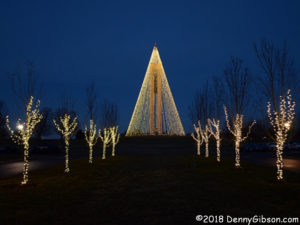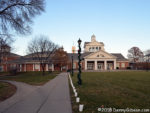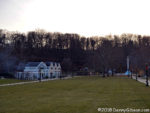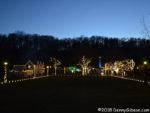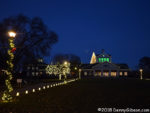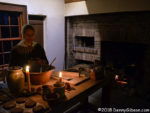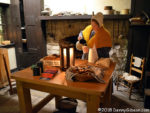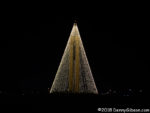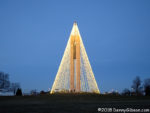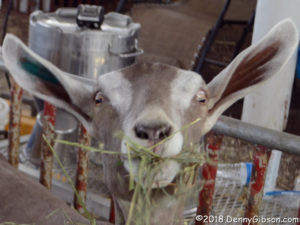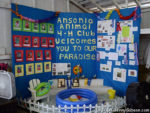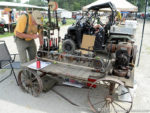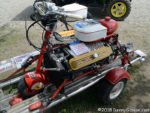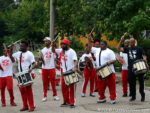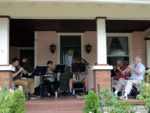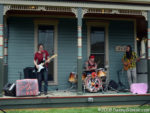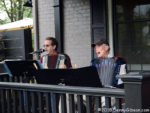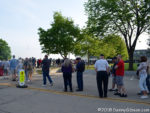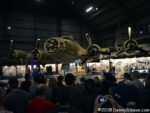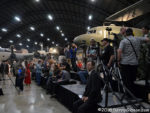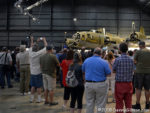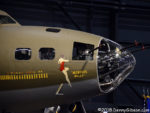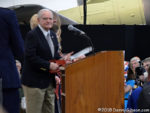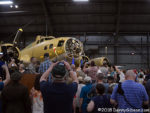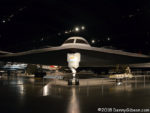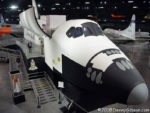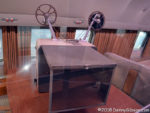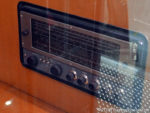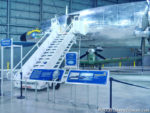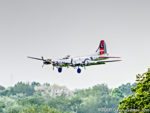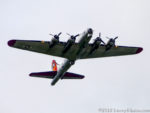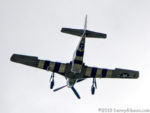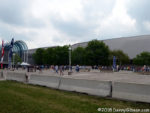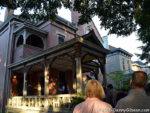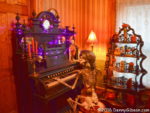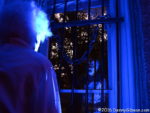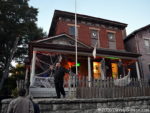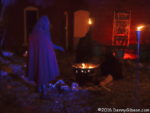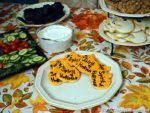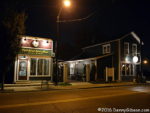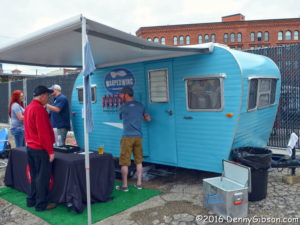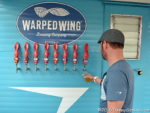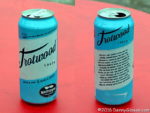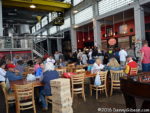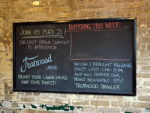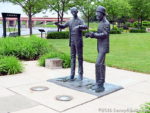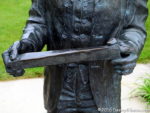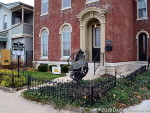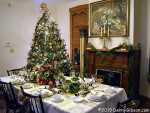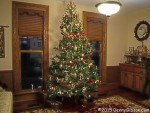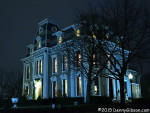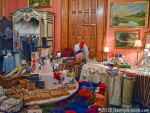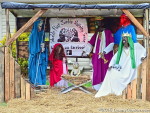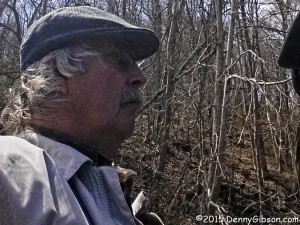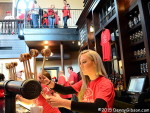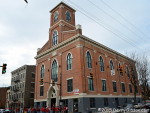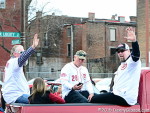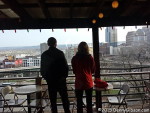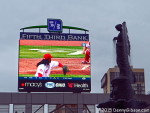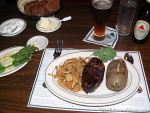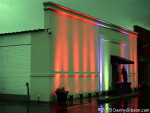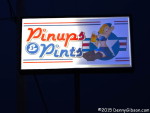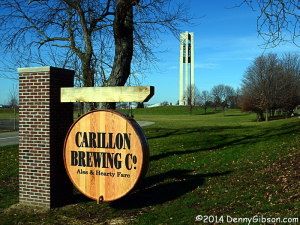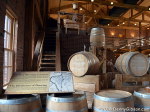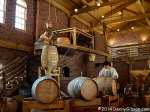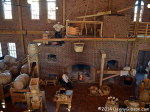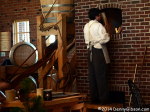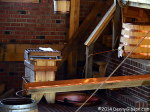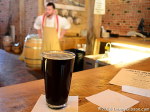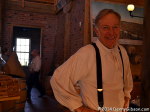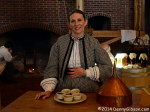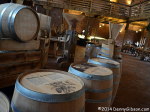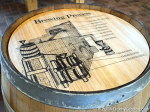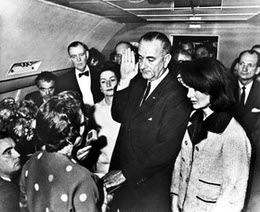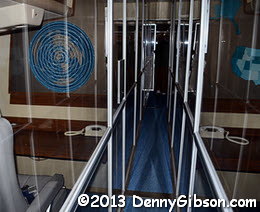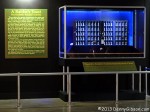 The title is my questionable attempt to make an aeronautical version of that saying about getting the cart before the horse. I started on a trip yesterday that is aimed at having me at Kitty Hawk, North Carolina, for the 115th anniversary of the Wright brother’s first flight on Monday. In anticipation of that, I recently revisited some Wright related sites in nearby Dayton, Ohio. This was actually the main reason I was in Dayton when I made the Carillon Historical Park visit that yielded last week’s Christmas themed post. There’s been a bit of a squabble between Ohio and North Carolina over where this flying business got started, but my title is not a reference to that. I’m just acknowledging the fact that this blog post about the Wright brothers in Dayton is going up before my trip journal entries about the brothers in North Carolina. Dayton was the Wright brothers’ home and there are quite a few locations associated with them. Probably the most important single location tied to the Wrights and their development of human flight is Huffman Prairie Flying Field where a replica of their 1905 airplane hangar stands. A placard in the hangar is here.
The title is my questionable attempt to make an aeronautical version of that saying about getting the cart before the horse. I started on a trip yesterday that is aimed at having me at Kitty Hawk, North Carolina, for the 115th anniversary of the Wright brother’s first flight on Monday. In anticipation of that, I recently revisited some Wright related sites in nearby Dayton, Ohio. This was actually the main reason I was in Dayton when I made the Carillon Historical Park visit that yielded last week’s Christmas themed post. There’s been a bit of a squabble between Ohio and North Carolina over where this flying business got started, but my title is not a reference to that. I’m just acknowledging the fact that this blog post about the Wright brothers in Dayton is going up before my trip journal entries about the brothers in North Carolina. Dayton was the Wright brothers’ home and there are quite a few locations associated with them. Probably the most important single location tied to the Wrights and their development of human flight is Huffman Prairie Flying Field where a replica of their 1905 airplane hangar stands. A placard in the hangar is here.
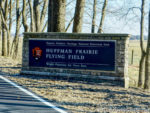
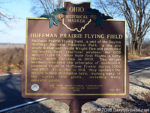 Official input to the squabble included North Carolina putting “First in Flight” on their license plates in 1982 and Ohio following with “Birthplace of Aviation” in 1997. In theory, the argument officially came to an end in 2003 when the U.S. Congress recognized Ohio as “the birthplace of aviation” while acknowledging that the first flights occurred in North Carolina. The text associated with that recognition is here. It’s easy and maybe somewhat natural to think that Ohio got the nod because the Wrights lived there but that the actual “birthing” happened in NC. The fact is that the brothers did a lot more than live in Ohio. Tremendous amounts of research and experimentation occurred in Dayton both before and after the trips to NC, and almost all of it that took place after December 17, 1903, took place at this field near what is now Wright-Patterson Air Force Base. Both of those slogans are correct. The first flight — actually the first four flights — happened in Kitty Hawk, North Carolina; Aviation was born in Dayton, Ohio.
Official input to the squabble included North Carolina putting “First in Flight” on their license plates in 1982 and Ohio following with “Birthplace of Aviation” in 1997. In theory, the argument officially came to an end in 2003 when the U.S. Congress recognized Ohio as “the birthplace of aviation” while acknowledging that the first flights occurred in North Carolina. The text associated with that recognition is here. It’s easy and maybe somewhat natural to think that Ohio got the nod because the Wrights lived there but that the actual “birthing” happened in NC. The fact is that the brothers did a lot more than live in Ohio. Tremendous amounts of research and experimentation occurred in Dayton both before and after the trips to NC, and almost all of it that took place after December 17, 1903, took place at this field near what is now Wright-Patterson Air Force Base. Both of those slogans are correct. The first flight — actually the first four flights — happened in Kitty Hawk, North Carolina; Aviation was born in Dayton, Ohio.
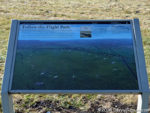
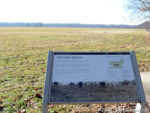
 The reason for the Wrights’ trips to North Carolina was the strong and steady winds there. They had proven that their machine could fly, but further development was required. The brothers naturally wanted to avoid the time and money consuming trips to the coast but Ohio winds are weak and fickle. They might lay out as much as 240 feet of rail only to be forced to move it when the wind shifted. The catapult near the hangar is a replica of the one they used to shorten takeoff distance to 60 feet with less need for a headwind. The brothers improved on the machine they flew in NC and eventually learned to control the craft to the point of flying around the perimeter of the field. Their flight path is kept mowed and may be walked.
The reason for the Wrights’ trips to North Carolina was the strong and steady winds there. They had proven that their machine could fly, but further development was required. The brothers naturally wanted to avoid the time and money consuming trips to the coast but Ohio winds are weak and fickle. They might lay out as much as 240 feet of rail only to be forced to move it when the wind shifted. The catapult near the hangar is a replica of the one they used to shorten takeoff distance to 60 feet with less need for a headwind. The brothers improved on the machine they flew in NC and eventually learned to control the craft to the point of flying around the perimeter of the field. Their flight path is kept mowed and may be walked.
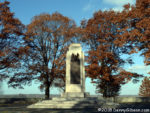
 Not far from Huffman Prairie Flying Field, a Wright Brothers Memorial stands atop a hill that bears their name. The area containing the field is included in the view from the overlook behind the monument. There is a small museum and interpretative center across the road from the monument.
Not far from Huffman Prairie Flying Field, a Wright Brothers Memorial stands atop a hill that bears their name. The area containing the field is included in the view from the overlook behind the monument. There is a small museum and interpretative center across the road from the monument.

 What I think is one of the coolest sculptures around stands in the median of Main Street in downtown Dayton. Called “Flyover”, it is a full scale representation of that first flight in Kitty Hawk. The sculpture’s length matches the 120 feet covered by that first flight. Each of the flight’s 12 seconds is marked by a set of wings showing the craft’s climb and descent. It’s really eye-opening to walk the length of the sculpture and realize just how short that first giant hop for mankind was. Another full scale sculpture stand just a few blocks away, on Monument Street. The plane depicted is the 1905 Wright Flyer III in which the Wright brothers improved their design and skills at Huffman Prairie. The real thing shows up in a couple of paragraphs.
What I think is one of the coolest sculptures around stands in the median of Main Street in downtown Dayton. Called “Flyover”, it is a full scale representation of that first flight in Kitty Hawk. The sculpture’s length matches the 120 feet covered by that first flight. Each of the flight’s 12 seconds is marked by a set of wings showing the craft’s climb and descent. It’s really eye-opening to walk the length of the sculpture and realize just how short that first giant hop for mankind was. Another full scale sculpture stand just a few blocks away, on Monument Street. The plane depicted is the 1905 Wright Flyer III in which the Wright brothers improved their design and skills at Huffman Prairie. The real thing shows up in a couple of paragraphs.

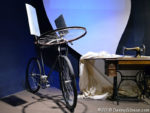
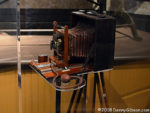 The Wright Brothers National Museum is inside Carillon Historical Park. It’s been there since the park opened in 1950 but just received the “National” designation in August. More Wright brothers artifacts are displayed here than anywhere else. The bicycle in the second picture is one of five Wright brand bicycles known to exist and one of two on display in this building. The Wrights eventually built a wind tunnel and other devices for more accurate measurements, but some of their earliest testing involved mounting variously shaped surfaces on the horizontal wheel then peddling into the wind to see how they reacted. This may not be the most famous camera in the world but it is responsible for taking one of the most famous photographs in the world. Orville set up the camera before climbing aboard the flyer, Wilbur handed off the bulb so he could help steady the craft during takeoff, and John T. Daniels pressed that bulb at the right time to head off the “pictures or it didn’t happen” crowd back in Dayton.
The Wright Brothers National Museum is inside Carillon Historical Park. It’s been there since the park opened in 1950 but just received the “National” designation in August. More Wright brothers artifacts are displayed here than anywhere else. The bicycle in the second picture is one of five Wright brand bicycles known to exist and one of two on display in this building. The Wrights eventually built a wind tunnel and other devices for more accurate measurements, but some of their earliest testing involved mounting variously shaped surfaces on the horizontal wheel then peddling into the wind to see how they reacted. This may not be the most famous camera in the world but it is responsible for taking one of the most famous photographs in the world. Orville set up the camera before climbing aboard the flyer, Wilbur handed off the bulb so he could help steady the craft during takeoff, and John T. Daniels pressed that bulb at the right time to head off the “pictures or it didn’t happen” crowd back in Dayton.

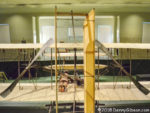
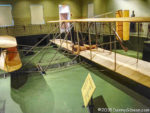 The story of how this display happened is almost as cool as the display itself. In the 1940s, when Colonel Edward Deeds was putting this park together, he had a chat with his good friend Orville Wright about making a replica of the first Wright Flyer. Orville had a better idea. Why not rebuild the real Wright Flyer III? This was the first truly practical flyer and the brothers considered it their most important aircraft. It had served its builders well in their 1905 developments at Huffman Prairie, then had been shipped to Kitty Hawk for U.S. Army trials in 1908. Following the trials it had been more or less abandoned although there were some pieces in various locations around the country. Orville knew where those pieces were and of course he knew everything there was to know about the original plane. What followed has been called “The first pilot’s last project”. Not only did Orville contribute to rebuilding the airplane, it was his idea to display it in a sort of pit so that visitors could get good views of the whole thing. It is believed that approximately 85% of the original machine was recovered and 60% to 80% was used in the reconstruction. Many of the original pieces that were not made part of the plane were used in making replacements. Some of these are displayed nearby. A placard with the plane’s specifications stands by one of its wings.
The story of how this display happened is almost as cool as the display itself. In the 1940s, when Colonel Edward Deeds was putting this park together, he had a chat with his good friend Orville Wright about making a replica of the first Wright Flyer. Orville had a better idea. Why not rebuild the real Wright Flyer III? This was the first truly practical flyer and the brothers considered it their most important aircraft. It had served its builders well in their 1905 developments at Huffman Prairie, then had been shipped to Kitty Hawk for U.S. Army trials in 1908. Following the trials it had been more or less abandoned although there were some pieces in various locations around the country. Orville knew where those pieces were and of course he knew everything there was to know about the original plane. What followed has been called “The first pilot’s last project”. Not only did Orville contribute to rebuilding the airplane, it was his idea to display it in a sort of pit so that visitors could get good views of the whole thing. It is believed that approximately 85% of the original machine was recovered and 60% to 80% was used in the reconstruction. Many of the original pieces that were not made part of the plane were used in making replacements. Some of these are displayed nearby. A placard with the plane’s specifications stands by one of its wings.

